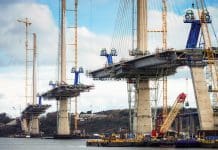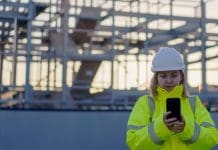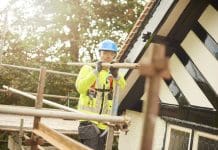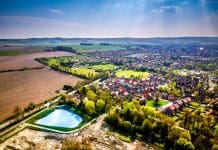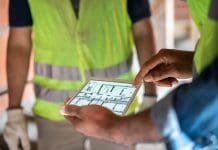Ian Streets, managing director of About Access, explores how the disruption caused by Covid gives us an opportunity to review visitor attractions and make everything more accessible
In this stop-start year for the UK’s heritage tourism industry it seems many of us have had to hit the pause button again. But not all, and maybe not for long, yet possibly for longer than we expected, and certainly for longer than we would want.
Confused? You should be! But in such circumstances, it’s important to take a long-term view. If your historic property has been sitting there for hundreds of years, what’s a few more months between friends?
Explore new funding sources
The crux of the current situation of course is money. There’s not much coming in, and even with the doors and gates closed there are bills to pay.
It’s not within our realm of expertise to advise on how to create new revenue sources but we are aware from our work in the heritage sector and others that many people have become very innovative.
There are many sites around the country which have a long and great history and which haven’t been developed much at all over the years. Most of them have a visitor attraction centre and car park, some have cafes or tea rooms and even space for events and functions.
The disruption caused by Covid at least gives us an opportunity to explore new funding sources, review all of these facilities, and to broaden the customer base by making everything more accessible.
The bigger amounts of money are coming from grants and funding schemes set up specifically to alleviate the impact of Covid. All of these should be pursued forensically whether they are managed by national government, local government, charities, arts and culture bodies or the corporate world.
The day-to-day opportunities may arise from appeals in the media, innovative membership and supporter schemes, online offers and shopping opportunities. Just because people are not allowed to access your premises doesn’t mean you can’t sell them your products.
Finding new ways to work
Some properties – extending to other tourist and hospitality attractions and businesses – are also revisiting how they work and finding new ways to extend their season, and this is the bit that we find particularly interesting.
If you normally close during the winter think about when and why. Are there some parts of your attraction that you can keep open during specific hours on certain days of the week? If you are unable to allow people inside your property is it possible to move more of the exhibits outside?
If you invest a bit of money to introduce new features such as video tours, or maybe more in making walkways more weather-resistant and creating viewing platforms to give people an elevated view of areas where accessibility is an issue, can you enable people to continue to enjoy attractions which the elements might render out of bounds?
If you close early in winter because of fading light can you remedy the situation by installing temporary lighting? Or even permanent lighting, because when all of this is done there are going to be budget deficits to tackle and that may mean being open as often as you can for as long as you can, but always with safety paramount.
The target has to be not just to reopen, but to reopen with a bang. Try to use your enforced downtime productively, invest wisely, show people that the place they love is now better than ever and has been improved in line with the needs of the people who visit, making them more welcome more often.
By taking a long-term view you will achieve a better return on your investment and you may find that some measures originally planned as temporary actually enable you to make lasting enhancements. Few would bet against the wide range of Covid prevention measures being completely banished to the annals of history any time soon, and a careful commitment to making visitor attractions more spacious and accessible will leave operators better prepared to cope with any future upheaval.
Communicating changes effectively
Any changes you do make should be communicated as effectively as possible. First-time visitors will want to know what you have to offer, and returning regulars will benefit from being updated on any adjustments you have made.
In the same way that people need to know your opening and closing times it is helpful to advise them on the terrain of the site, where potential obstacles might exist and what measures are in place to help visitors overcome or avoid them. Don’t forget to let people know your policy on facemasks, and try to have some in stock in case people forget or lose their own.
It’s all about helping people to prepare for their visit and giving them reassurance that you see their safety as paramount. It’s by no means certain that every tourist attraction, whether in the heritage sector or something completely different, will recover from Covid.
Those that survive will only thrive if they are able to demonstrate a top-quality product from start to finish, safe enough to rebuild fragile public confidence which took such a battering during 2020.
Ian Streets
Managing director
About Access
Tel: +44 (0)1482 651101


